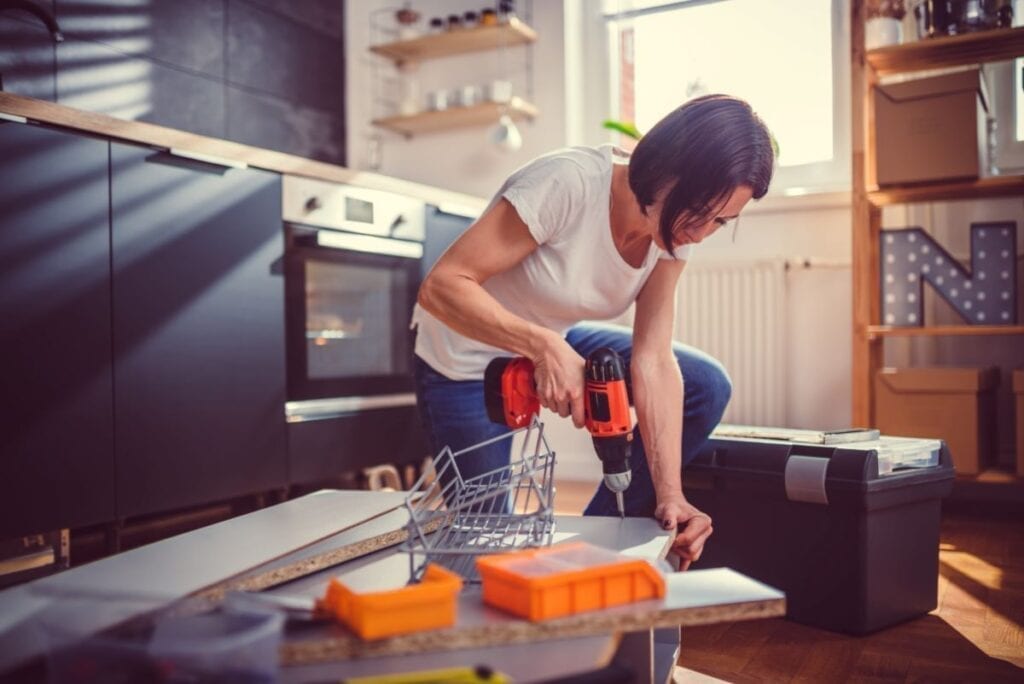5 DIY Projects to Make Your Home More Energy Efficient

Whether you’re moving into a new house or just trying to make the most of your current home, you can save money and lower your environmental footprint by making your home more energy-efficient.
As with most home projects, there’s a wide range of options — from simple lifestyle changes such as turning off your thermostat and opening windows to expensive projects such as installing solar panels that often require professionals.
Here are some projects you can do yourself without overwhelming labor or cost.
1. Switch out lightbulbs
Changing out your older lightbulbs with CFLs — compact fluorescent lightbulbs — or better yet, with LEDs, might cost a bit more per bulb, so you might have a bit of sticker shock. LEDs, or light-emitting diodes, are the most energy-efficient. You’ll spend about $1.50 each for a standard 60-watt equivalent CFL, or $2 to $3 for LED.
Over the lifespan of the LED, you could save more than $150 compared with a standard incandescent light. Plus, as Brooke Mitterman, manager of strategic energy and sustainability programs for Ecova, says, “LED bulbs last 50 times longer than incandescent bulbs, which means you don’t have to change burnt out bulbs as often.”
2. Adjust the water heater
Many manufacturers set the temperature for water heaters at 140 degrees Fahrenheit, but that level is too high for two big reasons: it’s more wasteful and expensive and it’s a safety hazard.
“Reducing the water heater temperature to 120 degrees will save you money and reduce the risk of scalding,” Mitterman says.
If the air temperature inside your house is at 78 degrees and your water heater is sitting at 140 degrees instead of 120 degrees, you’ll have a much greater loss of energy as the radiant heat leaves the appliance.
According to the U.S. Department of Energy, that 20-degree difference could save you more than $400 per year. To save even more, turn the water heater down or even off if you are planning to be away from home for more than three days.
Best of all? This project won’t cost you a thing.
3. Seal air leaks
Any gaps around windows and doors provide an opportunity for your comfortable air inside to escape or for the elements to make their way inside.
Combat this energy waster with a caulking gun. For about $2 a tube, you can generally seal a couple of windows. The gun itself costs less than $20.
You can do this annually to ensure a good seal remains. Just apply a thin bead along the edge of the frame, wipe with one finger to create an even seal, and then wipe off any excess with a damp cloth.
You also can buy weather stripping to install on your exterior doors to prevent air from seeping through at the bottom.
4. Insulate your attic door
The attic is one of the big energy wasters — especially in winter when you’re trying to keep the house warm, and all that warm air just keeps rising.
Most attic access hatches are built with no insulation. If your attic doesn’t have built-in stairs, a simple sheet of insulating foam board should make a big difference in energy lost to your attic. Affix the insulation to the back side of the attic panel and install a weather strip or sealing gasket on the lip where the hatch will rest when closed.
If you do have pull-down stairs, you can build an insulating box or buy an attic tent to place around the entrance. Energy.gov has a great how-to for building your own insulation box in a few hours for less than $150.
5. Get smart about your thermostat
At the very least, you should have a programmable thermostat in your home that allows you to set temperatures for when you’re at work and asleep. Turning the system down during the day can significantly reduce waste since you’re not around to enjoy it. You can pick up a basic programmable thermostat from a local hardware store for less than $40, and they’re usually pretty easy to install.
If you want to take it a step further, you could invest in a smart thermostat. This will allow you to adjust the temperature at home even when you aren’t there. Many also come with other nice features, such as maintenance reminders and energy cost calculations. These systems retail for $200 to $500 and might be more difficult to install the more basic models.



